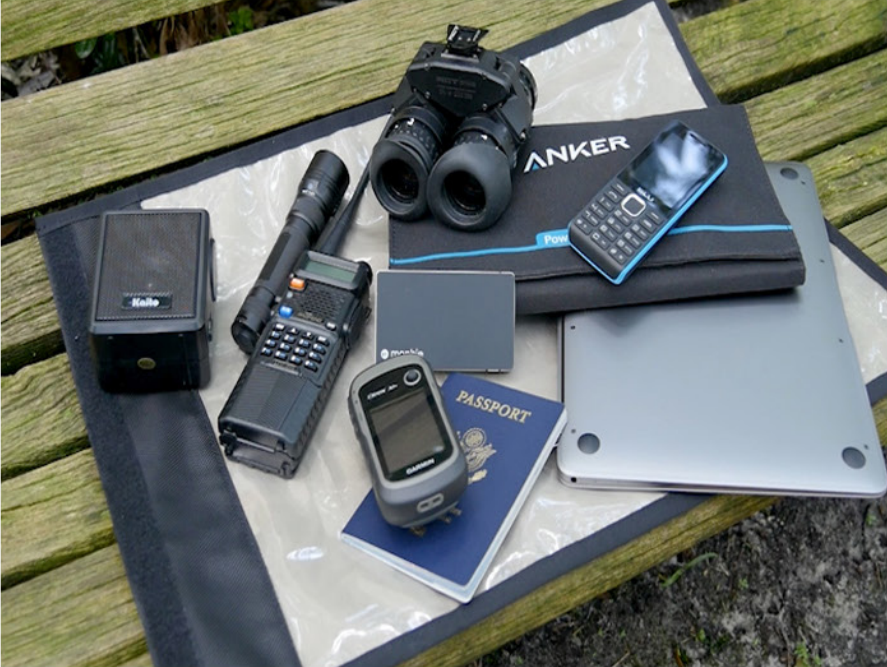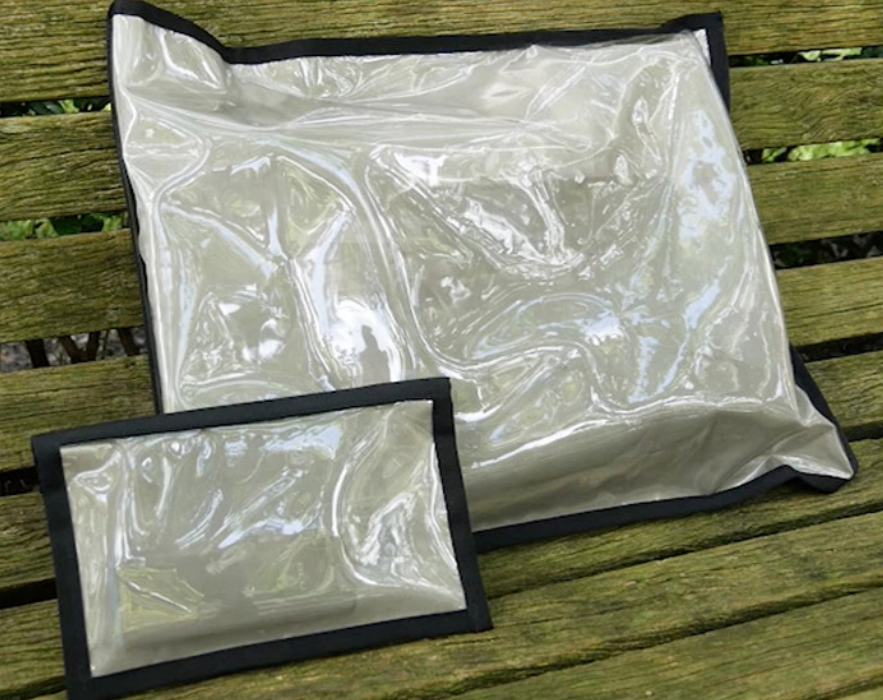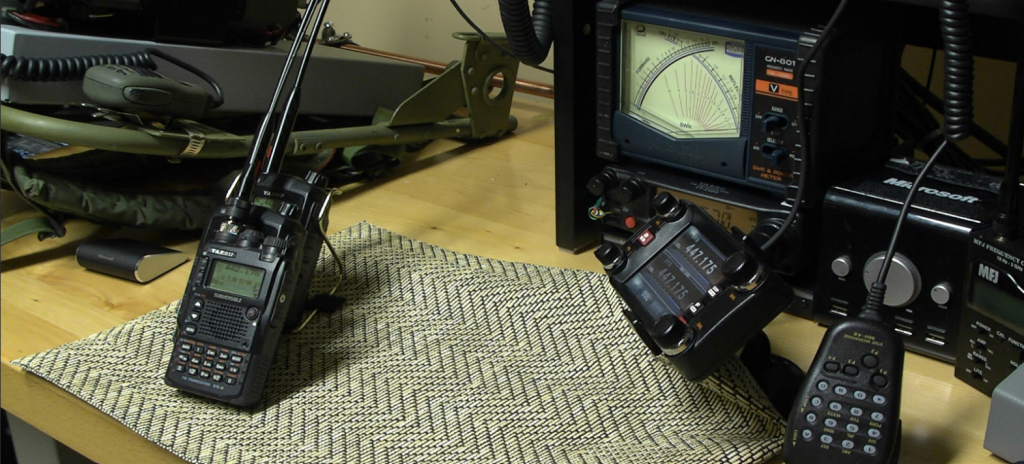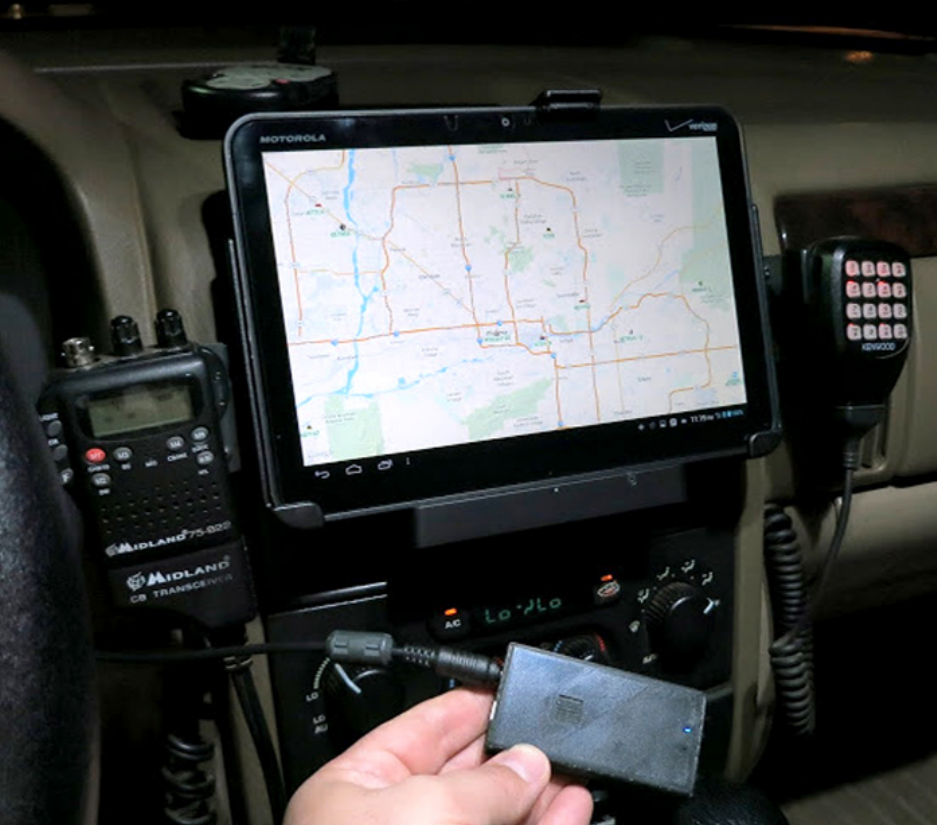Most hams seem to buy a hand-held radio as their first step into the hobby. One of the deterrents for new hams is the cost of a radio, but with the ‘flood’ of cheap, Chinese radios, such as the Baofeng’s and BTECH’s, on the market, there has been a huge increase in the number of new hams, and especially those involved in preparedness.

The Baofeng radio has limitations. It has only 128 memory channels and programming it can be a pain as it does not auto-complete some of the functions (automatic repeater offsets for one).
FCC Rule Changes
In September of 2017, the FCC made some changes to Part 95 of the FCC rules. These specifically cover personal radio services such as CB, Family Radio Service (FRS), General Mobile Radio Service (GMRS), and Multi-Use Radio Service (MURS). One requirement is that radios in some of these services (FRS, GMRS and MURS) must be “type approved.” This means they must meet the requirements as specified in the rules. This includes only being able to transmit in the one specific service the radio is approved for.
As those of you with a Baofeng or BTECH radios know, these radios will work in FRS, GMRS, ham, and other frequencies. There were some FCC order notices issued late last year addressing some of this and essentially banning the import and sale of radios that could work with more than one band. While the orders were vague and did not specify Baofeng or BTECH directly, they certainly caused a stir in the radio community.

If you have a Baofeng, you might be wondering what your options are to upgrade, or even why you should. First, you get what you pay for. While there is little heart break if you drop and destroy a radio you paid less than $50 for, in an emergency or disaster you want a radio you can rely on to take some beating. Additionally, with the limitation of 128 memory channels in the Baofeng radios, depending on where you live, you can easily have more repeaters you would want to program in, especially if you travel. Of course, it doesn’t hurt to have a bunch of spare radios in a faraday bag in case of SHTF, and at $49.95 each, that’s easy to do.
Why Upgrade?
Regardless of the FCC rules, the Baofeng and similar radios are plentiful, so why would we want to buy a more expensive radio, apart from the obvious additional memory capacity?
Modes
In addition to the normal analog mode found in all radios, and commonly found on most amateur repeaters, there are other modes that can be found around the country, such as Digital Smart Technologies for Amateur Radio (D-STAR), Digital Mobile Radio (DMR), System Fusion, and Project 25 (P25). These are all forms of a digital signal and require a radio with those specific capabilities. It should be noted that P25 and DMR were originally designed for commercial applications and have been adapted and modified for use in Amateur Radio. Repeaters using most of these digital modes are connected over the internet and thus it is possible to talk to hams all over the world using just a handheld radio. In addition to the digital mode links, there are two systems that use regular analog capabilities to link around the world: the Internet Radio Linking Project (IRLP) and Echolink.
Again, we will discuss these in more detail in another article.
The advantage of these digital modes is the ability to talk further than your handheld and the local repeater. This provides you the opportunity to keep in touch with friends and families when travelling or if they live outside your local area. It also allows you to participate on preparedness and like-minded nets.
We will discuss the differences in the different digital modes in another article, however, DMR, and in particular, the Brandmeister network, is a rapidly growing network of repeaters across the U.S. and the world. So, when deciding what radio to purchase, not only should you consider the availability of accessories, as discussed in other articles, you should also research what different types of repeaters are in your area.
Repeaters
The best resource to find repeaters in your area is www.repeaterbook.com. You can select system types (DMR, System Fusion, D-STAR, etc.) in addition to IRLP and Echolink enabled repeaters, as well as other linked repeaters in your area. Once you have determined if there are some digital mode repeaters in your area, you can decide whether you want a suitable capable handheld. You will probably find that in most areas DMR repeaters are in the 70cm band. This is because the original DMR capable radios for commercial applications were only available in 70cm. Only in the recent couple of years have manufacturers marketed dual band DMR radios as it has become popular in Amateur Radio. The AnyTone D878UV is one of the newest DMR capable radios that has just come on the market.
In most instances, you are going to want a 2m/70cm capable radio. There are very few areas that don’t have repeaters in both bands. In some areas, you may have 1.25m (220mhz) repeaters. If you do, you will find they are probably not used a lot or are linked to a 2meter repeater. If they are standalone, you might want to consider a radio capable of 1.25m, as your group could have conversations with less people hearing.
Mobile Radios
Another thing you should be considering, assuming you already have an HT, is whether it’s time to get a mobile radio. Take into consideration where you spend more time talking on the radio – you should be talking on it and practicing, rather than just storing it away with the intention of only using it in an emergency, otherwise you will have no clue as to how to use it. If you spend a lot of time in your vehicle, then you will get much better distance, and reception, from a 50watt mobile and antenna outside, than a 5watt handheld. If you spend more time at home, or have family at home while you are away, then a mobile in the house with an antenna outside and either a 12v power supply or 12v battery supply (backup power for when the electricity goes out), is probably going to serve you better.

Shopping Around
The best resource to look at specifications of radios is Universal Radio’s online catalog (https://www.universal-radio. com/catalog/index2.html). In addition to current models, you can also research older models. Once you decide on a radio, do your due diligence searching for best prices. Another good source for ham equipment is Ham Radio Outlet (usually just called HRO). I have found they typically have better discounts.
Also, if you live near a large city, they may have a store near you so you can go and “touch and feel.” You can also get involved with a local ham club. There you will find people who can give you opinions on different radios, remembering that if you ask 10 people you will get 20 different opinions. Local ham fests can sometimes be a good place to find good used radios, but you need to do your research and have an idea of what something is worth before you go, or at least check online before you buy. Deals can be found at online market places, but at the same time there are unscrupulous people. I’ve got some deals and I’ve also been sold stuff that had problems.
Again, buyer beware: if it sounds too good to be true…
Another source is estate sales. Usually a local club or a ham that is a friend of the family, will sell equipment of a “silent key” (a deceased ham). They will typically be honest as they want the equipment to go to a good home. Usually, the equipment will be older mobile or base stations, but I’ve bought several over the years that have been well taken care of.
Additional Considerations
Note that DMR radios have talk groups (like a virtual channel), a zone (like a group), and there can be limits to the number of channels per zone, so you will see these listed either in place of or in addition to standard memory capacity. DMR radios are different, and a little more difficult to program, than a regular analog radio. DMR radios and programming on the different digital modes will be explained in more detail in another article.
You will also see that some radios have Automatic Packet Reporting System (APRS), a feature that allows others to track you, and you to see who is nearby. (see https://aprs.fi/). APRS also allows short text messages to be sent to a specific group or all users. This is useful to keep track of family or group members and is being increasingly used in off-road search and rescue operations. We will discuss more about APRS in another article.

Final Thoughts
A new ham usually buys a hand-held radio first, however, they have limitations, such as power, distance, and battery life. While you can add extended antennas and have several batteries, you are still limited.
When looking to upgrade, consider where you are on a daily basis and who you might need to reach in an emergency to keep in touch with your family, friends, and preparedness group. If you have a preparedness group, consider all buying the same radio, it makes programming and learning much easier, especially if you have someone in your group that is already knowledgeable about radios. Although, don’t leave it all up to them, make sure you can do it yourself and suck their brain for all the knowledge you can. At the end of the day, it’s what you have between your ears that will keep you ahead of the pack.
This article was originally published in Survival Dispatch Insider magazine Volume 3 Issue 2.
=====
Become a Survival Dispatch Insider …
We bring together survival enthusiasts and preppers to share skills and knowledge, so you can enhance your preparedness for emergencies and ensure the safety of you and your community.
The Results You’ll Get …
Our community, courses, and membershipsare pretty special. We’re focused on the ways it will make a huge difference in your life.
Here are a few of the things you’ll be able to do as a member of Survival Dispatch Insider …
1) Improve your emergency preparedness by learning survival skills and strategies from experienced preppers.
2) Build lasting connections with like-minded individuals that share your passion for safety and readiness.
3) Access a wealth of knowledge and resources to assist in protecting you and your community during unexpected situations.
Click HERE to get started.
=====
